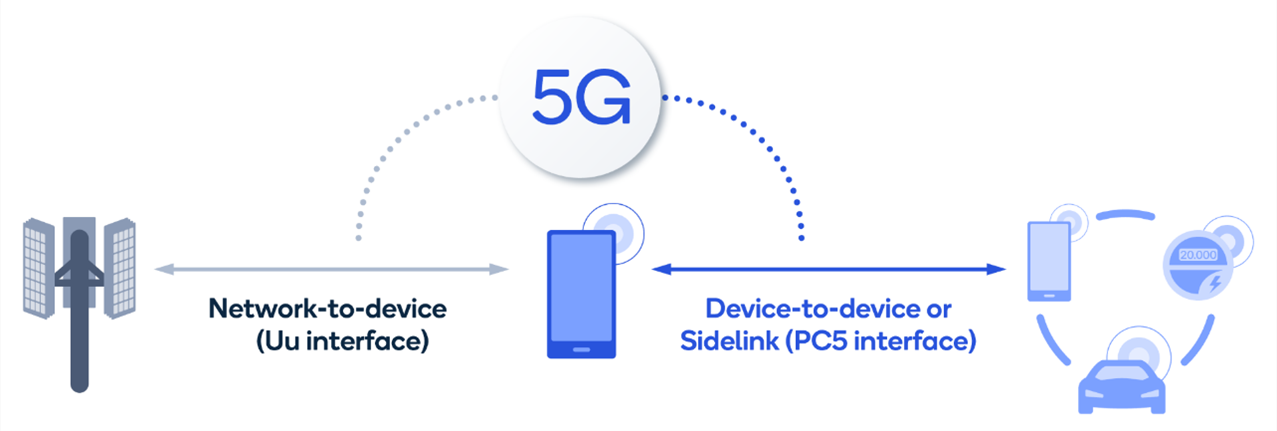As the journey toward intelligently connecting virtually everyone and everything to the cloud continues, the need to create innovative wireless technologies that enable high-performance connectivity is paramount.
Current 5G systems operate primarily on a network-to-device communication model, on which all data transmissions flow between the network (i.e., base station) and devices (e.g., smartphone). However, to fully deliver on the original 5G vision of supporting a wide range of devices, services, and deployment scenarios, expanding the 5G topology is essential to reach new levels of performance and efficiency.
That is why sidelink device-to-device communication (as opposed to the traditional downlink and uplink communications) — designed to facilitate direct communication between devices independent of connectivity via the cellular infrastructure — was introduced in 3GPP standards. This new topology not only benefits automotive communication (i.e., C-V2X), but it also enhances many 5G use cases, such as IoT, mobile broadband, public safety, and more.
Expanding the connected intelligent edge with sidelink
Sidelink is a core topology of the 5G system design that enables direct communication between two devices without the participation of a base station in the transmission and reception of data traffic.

Figure 1 – Sidelink is a core topology of the 5G system
We envisioned 5G to support diverse devices, services, spectrum, and deployments, and sidelink has been part of this vision from the very beginning. It presents a natural expansion opportunity that can bring new system values and possibilities, complementing existing network-to-device communication.
Since sidelink extends beyond network-to-device communications to connect more devices at the edge — closer to the end-users, it naturally expands the connected intelligent edge that fuels cloud economy growth with new classes of services and experiences.

Figure 2 – Sidelink can further extend the connected intelligent edge
New 5G versatility brought by sidelink
Sidelink is being designed to deliver a broad set of benefits for the overall 5G system. It can operate in different spectrum configurations such as dedicated, in-band licensed, and unlicensed, providing the flexibility for it to be adopted in diverse settings. Furthermore, it can support a wide range of devices that facilitates a diverse ecosystem of use cases. For instance, sidelink can effectively
The post How will sidelink bring a new level of 5G versatility? appeared first on RCR Wireless News.
